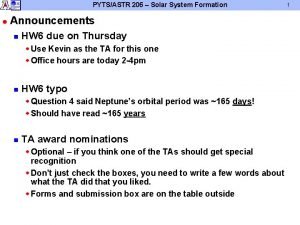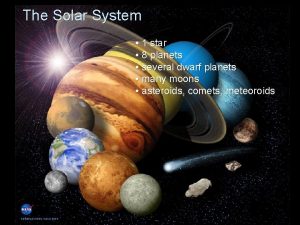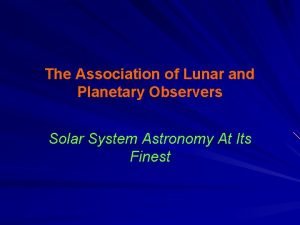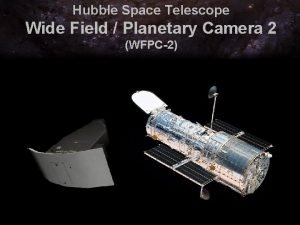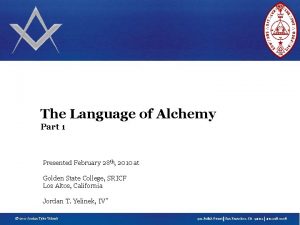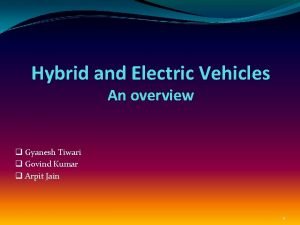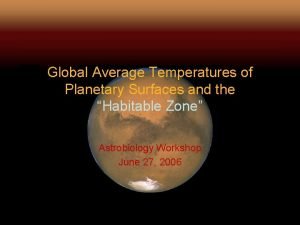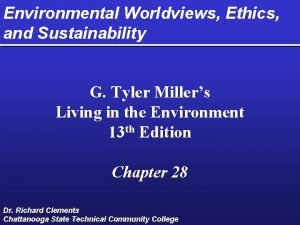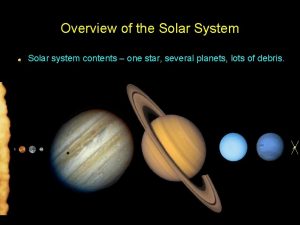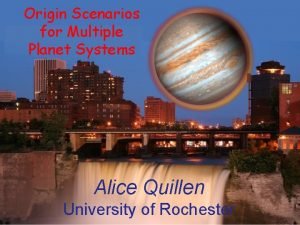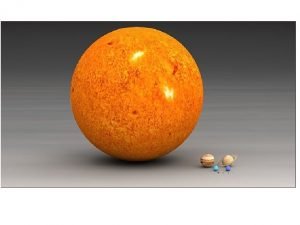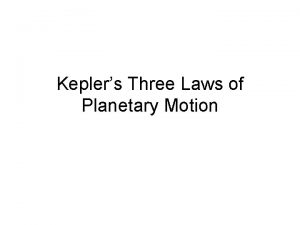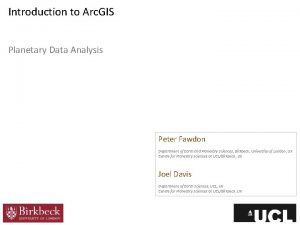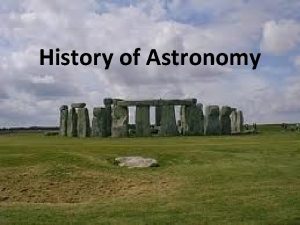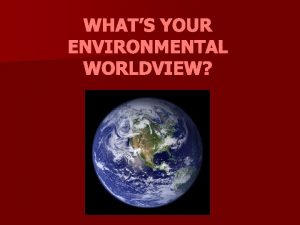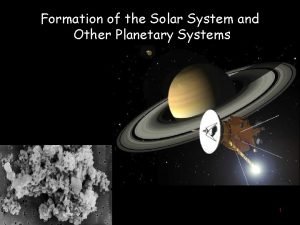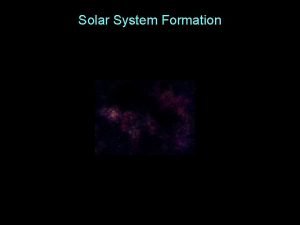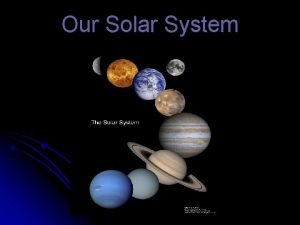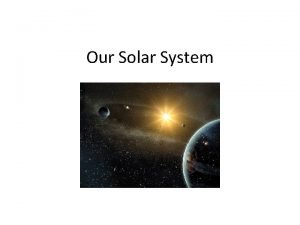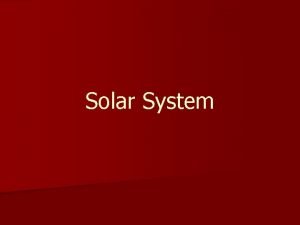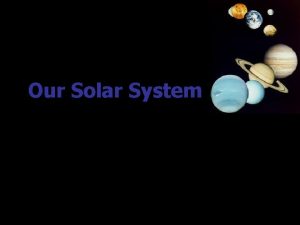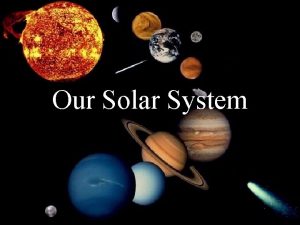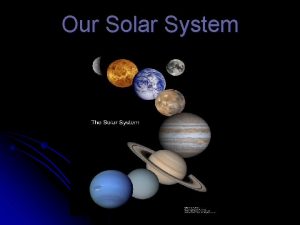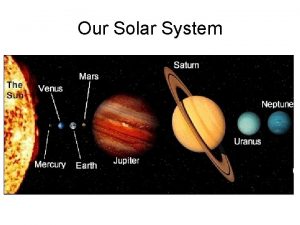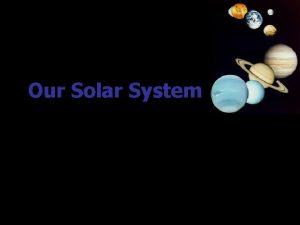Formation of the Solar System and Other Planetary



















- Slides: 19

Formation of the Solar System and Other Planetary Systems

You will discover… • how the solar system formed • why the environment of the early solar system was much more violent than it is today • how the planets are grouped • how astronomers characterize each planet’s “personality” • how the moons throughout the solar system formed • what the debris of the solar system is made of • that planets have been observed around a growing number of stars • that newly forming star and planet systems are being observed

Pre-Reading/Literacy Go to Newsela. com l Set up an account. l Open the Assigned Article l l How Our Solar System Formed: A Close Look at the Planets Orbiting Our Sun l Read the Article and Take the Quiz

During Reading We are going to transform this article into notes about the formation of the solar system. l Discuss note-taking from an article. l

Post-Reading Create a timeline to show the formation of our solar system. l In your final drawing make sure you include all of the planets in our solar system (in order) along with the asteroid and Kuiper belt. l You may download and use this Power. Point to help. l

The lightest and simplest elements, hydrogen and helium, are abundant in the universe. Heavier elements, such as iron and silicon, are created by thermonuclear reactions in the interiors of stars, and then ejected into space by those stars. Ejection of Matter from Stars FORMATION OF PLANETARY NEBULA SUPERNOVA EXPLOSIONS

Great clouds of gas and dust ejected from old stars are gathered into regions from which new stars can be made. This region in the constellation of Orion shows new stars still surrounded by the nebula from which they were formed.

Solar System Formation Thanks to Mary Oshana

The Formation of a Solar System A solar system begins as a gas cloud that collapses toward the center under the influence of gravity. A condensation forms at the center, which is called a protostar. A flattened disk of matter surrounds the protostar, which begins to shine.

The Formation of a Solar System The rising temperature from the sun removes the gas from the inner regions, leaving dust and larger debris. The planets establish dominance in their regions of the solar system. After almost all of the remaining gas, dust, and small debris has been collected by the larger objects, the solar system takes on the form we recognize today.

Other Star Systems Forming We can look at young star systems developing today. The planets orbiting these stars are formed from the surrounding disks of gas and dust, called protoplanetary disks or proplyds.

PLANET FORMATION Within the disk that surrounds the protosun, solid grains collide and clump together into planetesimals. The terrestrial planets are built up by collisions and the accretion of planetesimals by gravitational attraction. The jovian planets are formed by gas accretion.

Thanks to Tim Worley

COMPUTER SIMULATION OF THE FORMATION OF THE SOLAR SYSTEM

Common Properties of Planet Orbits in Our Solar System As viewed from above, all of the planets orbit the Sun in a counter-clockwise direction. The planets orbit in nearly the same plane. All planets except Pluto have an orbital inclination of less than 7°.

Planets and moons which have no appreciable atmosphere will show scars from impacts with planetary debris, called craters. Our Moon still has numerous craters, providing evidence of many impacts in its history.

Debris in Our Solar System Today Asteroids—rocky bodies several kilometers across which orbit the sun—are found mainly in the asteroid belt located between the orbits of Mars and Jupiter. Even smaller rocky objects, called meteoroids, are scattered throughout the solar system. Billions of chunks of rock and ice called comets are located beyond the orbit of Neptune. Occasionally, one of these will be pulled toward the inner solar system and form the familiar “tails” as it orbits close to the Sun.

Comparative Planetology ORBITS • The planets nearest to the Sun (Mercury, Venus, Earth, and Mars) are relatively close together, while those farther away (Jupiter, Saturn, Uranus, Neptune, and Pluto) are more spread out. • Most of the planets are in nearly circular orbits.

Two Basic Groups of Planets TERRESTRIAL JOVIAN Small size Large size Low Massive Higher density Low density Mostly rock Mostly gas Mercury, Venus, Earth, Mars Jupiter, Saturn, Uranus, Neptune
 Nebular theory comic strip
Nebular theory comic strip Formation of the solar system
Formation of the solar system The formation of the solar system
The formation of the solar system The formation of the solar system
The formation of the solar system Association of lunar and planetary observers
Association of lunar and planetary observers Wide field and planetary camera 2
Wide field and planetary camera 2 Wholesale solar energy
Wholesale solar energy Inexhaustible source of energy
Inexhaustible source of energy Seven planetary metals
Seven planetary metals Prius planetary gear animation
Prius planetary gear animation Planetary temperature calculator
Planetary temperature calculator Life centered worldview
Life centered worldview Planetary systems
Planetary systems Hr 8799
Hr 8799 Planetary positions today
Planetary positions today Kepler's three laws of planetary motion
Kepler's three laws of planetary motion Planetary data analysis
Planetary data analysis Stonehenge planetary orbits
Stonehenge planetary orbits Diagram of imaginary continent on earth
Diagram of imaginary continent on earth Planetary management worldview definition
Planetary management worldview definition

